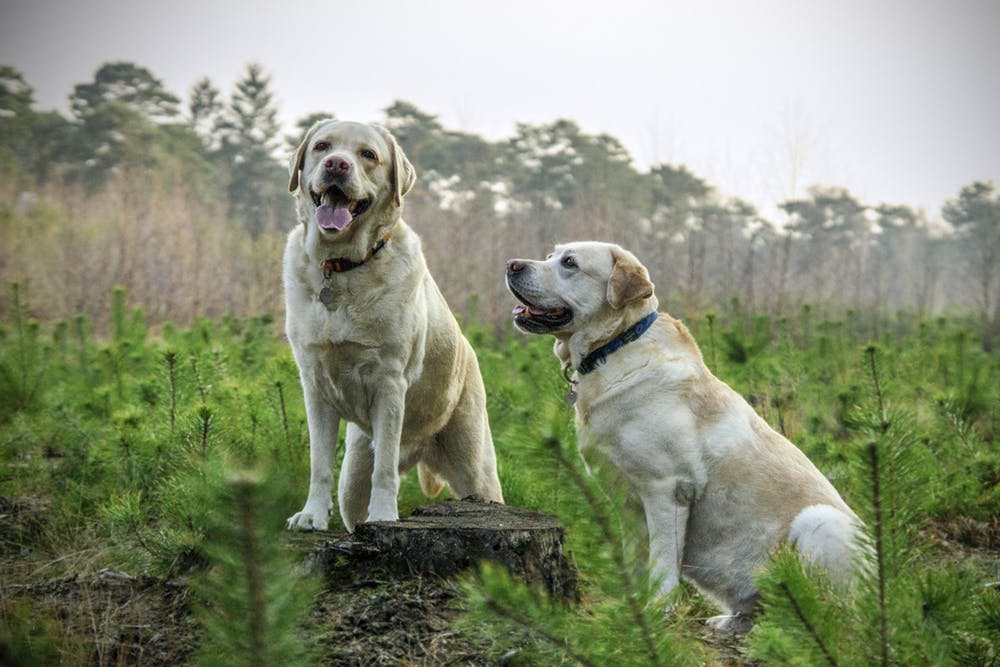Meet Emmett, a dachshund Yorkshire terrier mix born on Superbowl Sunday, 2009. My siblings and I begged our parents to let us take him home, and since it was four young, whiny children against one parental unit, we won out with only one caveat: as the ones who wanted the dog, we would be primarily responsible for his care and training.

Katherine Burt 2009
We were excited to have our new puppy, but as the days turned into weeks and months, we began to lose interest. We were kids after all, and more novel things drew our attention. We loved Emmett, but during that formative time, we failed to consistently train him.
Flash forward ten years, and Emmett has taken on somewhat of a reputation as “the problem child” in my dad’s household. His most challenging problem has been urinating in the house. If it has ever touched the floor, you can bet that Emmett has peed on it. This behavior has only gotten worse with age, and it has led to a lot of resentment toward a now middle-aged Emmett.
Emmett’s situation is not all that unique. As puppies age into older adult dogs, behaviors that once seemed manageable can become a big problem for the whole family. A similar problem can arise when new owners adopt an older dog from a shelter, only to find that they have not been properly trained. When these challenges arise with the dogs we love, we may find ourselves desperately wondering: can old dogs learn new tricks?
After a particularly bad week of finding pee spots all over everything I cared about, I had about had it with Emmett. I found him lounging on the couch and marched angrily toward him, intending to give him a piece of my mind. But when he looked me in the eyes, I suddenly saw him as a puppy, full of potential and the desire to be loved and valued by our family. In that moment, I realized I had an obligation as one of Emmett’s caregivers to help him relearn the skills he needed to be the good boy he always wanted to be.
No matter how old a dog is, or how seemingly stuck in their ways, all dogs want and deserve to be valued members of the family. As pack animals, they thrive on boundaries and structure. While training an old dog requires patience and consistency, it can be a rewarding experience for both you and your pet. The following suggestions can help your pet get moving in a positive direction.
-
VIEW YOUR PET’S BEHAVIOR AS COMMUNICATION.
Dogs lack the language skills to communicate their needs and concerns, but that doesn’t mean we can’t understand them. As owners, it is important to remember that problem behavior in dogs can be an indicator of something more complex. Barking, destruction, and indoor urination can all indicate nervousness, anxiety, restlessness, or even a medical issue. Observing the situation in which your pet’s bad behavior occurs might give you some insight into why it is occurring and what your dog is trying to tell you. When you understand the cause of your dog’s behavior, it becomes easier to intervene.
-
KEEP IT POSITIVE!
Your pet desires to be a positive member of your household, and even old dogs respond well to positive reinforcement in the form of praise and a favorite treat. Once you identify the behavior you want to change, you will need to decide on a behavior to replace it. “I want my dog to stop chewing the furniture” becomes “I want my dog to start using chew toys.” “I want my dog to stop barking at guests” becomes “I want my dog to greet guests calmly.” In Emmett’s case, “I want my dog to stop marking in the house” became “I want my dog to start marking outdoors.”
Reinforce the new behavior by teaching your dog to respond to a clear command and rewarding good behavior with treats and praise. Your dog will enjoy spending time with you, learning new things, and getting rewarded for it. He or she will naturally begin to engage in this new behavior more and more often, eventually leaving the old behavior behind.
-
BE PATIENT AND CONSISTENT.
Just like dogs can’t use language to communicate their needs to us, we cannot use language to communicate our needs to them. It will take patience and consistency over a long period of time to show your dog what you expect of him. Older dogs have likely gotten into bad behavioral ruts, and it can be challenging to interrupt those old habits to teach new behaviors. Remember, if you give up, your dog will too. Your pet looks to you for guidance and leadership, so consistent effort on your part will go a long way.
-
ASK FOR HELP!
Addressing your pet’s bad behavior can feel overwhelming, especially for owners who already have a lot on their plate. Unfortunately, many owners reach a point where they feel they cannot handle the commitment and may decide to rehome their older dog. If you feel you are reaching this point with your dog, it is time to ask for help. Ask your veterinarian, dog groomer, or local pet shop employee to help you find a trusted and affordable trainer for your pet. Enlisting expert help can take the weight off your shoulders and turn a stressful experience into a positive one for both you and your dog.
At ten years old, Emmett is proud to report that he has learned some new tricks! He goes for a walk every morning to relieve some of his marking instincts, and consistently goes to the bathroom outdoors during the day. He wears a belly band when left unsupervised in the house, but he doesn’t mind! The whole family is pleased that the house is pee free, and Emmett is happy to be a “good boy.”
As his self-appointed trainer, I have found the whole experience to be fun and encouraging. I am starting to relate to Emmett with more compassion and understanding, and I am both surprised and proud by all he has accomplished in recent weeks. Emmett and I don’t plan to stop here! I have a whole list of new skills I plan to teach him, now that I know old dogs can learn new tricks. And if Emmett’s bright eyes and wagging tail are any indication, they truly appreciate it.
by Emily Giroux

